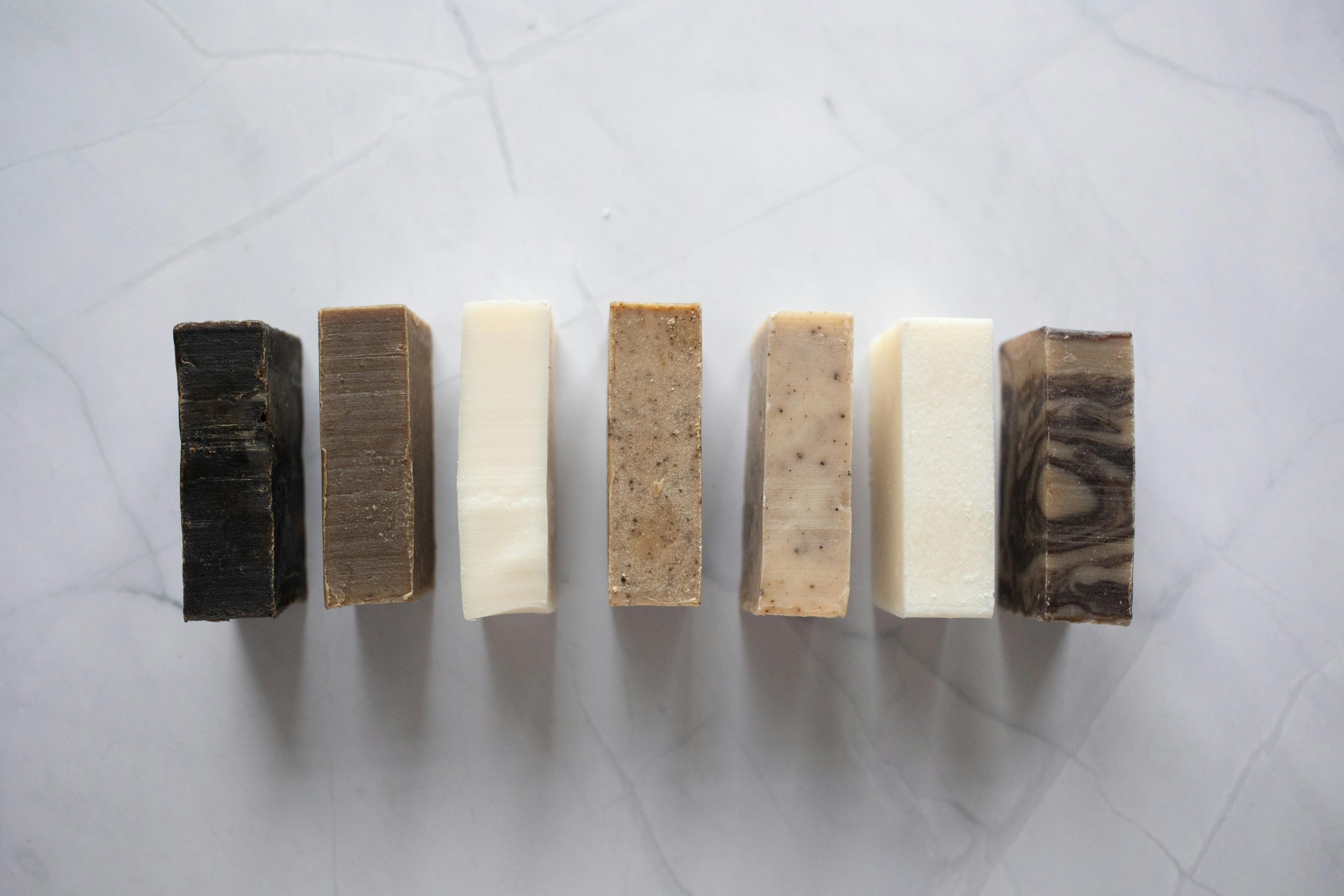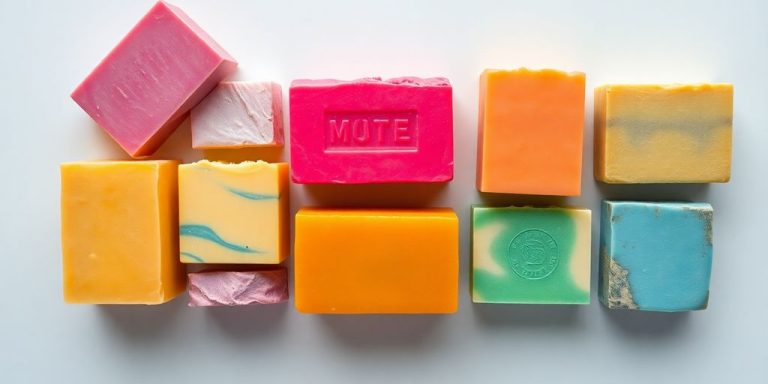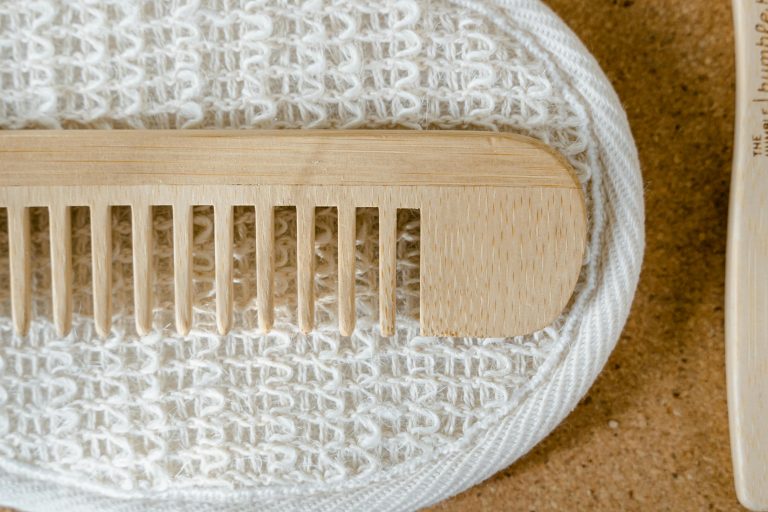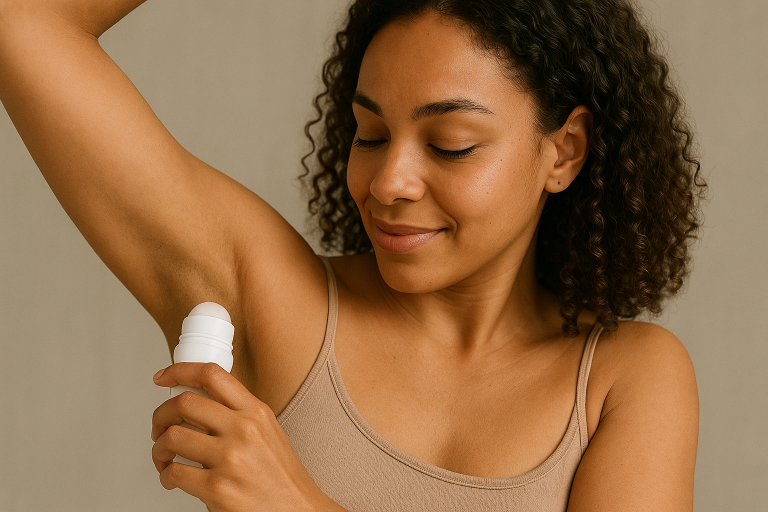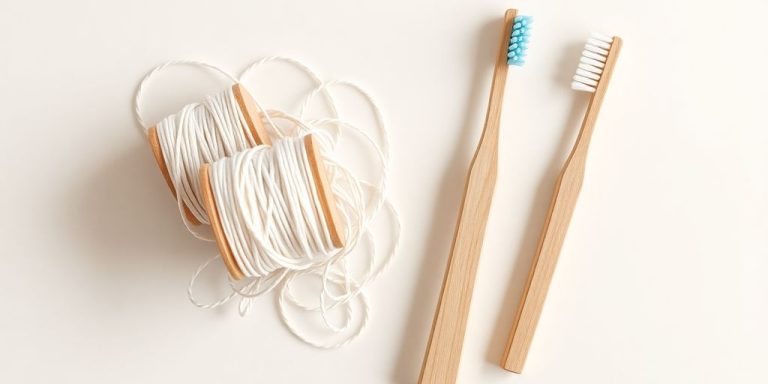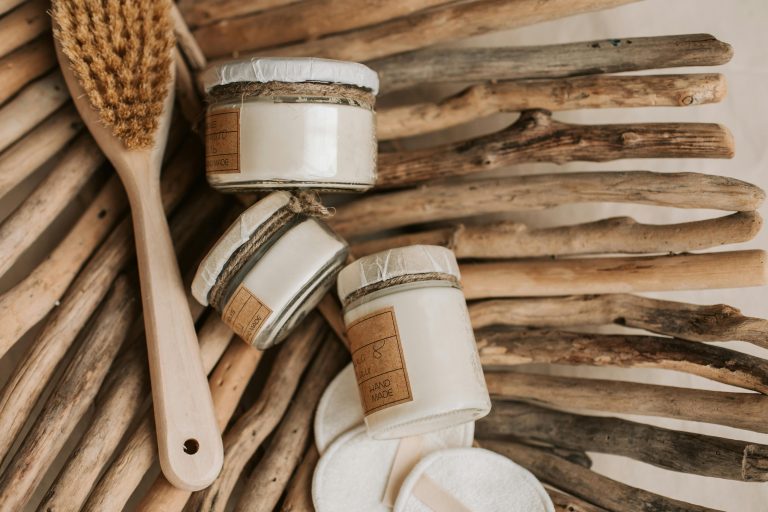Bar Soap Vs Body Wash: A Case to Ditch Body Wash For Good
In the quest for clean skin, the choices in the shower can feel overwhelming. For years, body wash has dominated the market, promising convenience and a range of scents. However, a closer look reveals that the old-school bar soap might be the superior choice for your skin, your wallet, and the planet. This article will explore the differences between bar soap and body wash, debunk common myths, and make a case for why it’s time to switch back to the simple effectiveness of bar soap.
Key Takeaways
- Bar soap is typically made from natural oils and fats combined with lye, resulting in a simpler ingredient list compared to the detergent-based and often chemical-laden formulations of body wash.
- Contrary to popular belief, bar soap can be just as hygienic as body wash, provided it is stored properly in a dry place.
- Environmentally, bar soap is often the better choice due to its minimal, often plastic-free packaging, whereas body wash typically comes in single-use plastic bottles that contribute to waste.
- Natural bar soaps, especially those with moisturizing ingredients like shea butter or coconut oil, can be gentler and more beneficial for sensitive or dry skin than many body washes.
- Bar soap generally offers better value, lasting longer than multiple bottles of body wash, making it a more cost-effective option over time.
What’s the Real Difference Between Bar Soap and Body Wash?
When you’re standing in the shower, faced with a wall of options, the choice between a bar soap and a body wash can feel surprisingly complex. Many people wonder about the fundamental differences between these two common cleansing products. At its core, the distinction lies in their formulation and how they interact with your skin. Understanding these differences is key to making an informed choice for your daily routine.
Bar Soap Basics
Bar soap has been around for ages, and its creation involves a process called saponification. This is where fats or oils are combined with an alkali, like lye. The result is a solid bar that effectively lifts dirt and oils from the skin. Many traditional bar soaps use simple, recognizable ingredients, though it’s always wise to check the label. Some bars are formulated with moisturizing agents like shea butter or natural oils, making them gentler than you might expect. When considering [bar soap vs liquid body wash], the simplicity of ingredients is often a major draw for many.
Inside a Bottle of Body Wash
Body wash, on the other hand, is typically a detergent-based product. It relies on synthetic surfactants to create lather and clean the skin. While these ingredients are effective at removing dirt, they can sometimes be harsher and strip the skin of its natural oils. Body washes often contain a longer list of ingredients, including preservatives, fragrances, and other additives designed to enhance texture or scent. This complexity is why some people find that body wash can be drying or irritating, especially if they have sensitive skin. The debate often comes down to whether [shower gel vs bar soap] offers a better cleansing experience.
The primary difference boils down to how they are made and what they contain. Bar soap is traditionally made from fats and lye, resulting in a simpler composition. Body wash, however, is a liquid detergent that often includes a wider array of synthetic ingredients.
Bar Soap vs. Body Wash Comparison
| Category | Bar Soap | Body Wash |
|---|---|---|
| Ingredients | Simple formulas with natural oils and fats; fewer preservatives | Contains surfactants, emulsifiers, and synthetic fragrances |
| Moisturizing | Can be drying (higher pH), but many now include nourishing oils | Often more hydrating with added emollients and creamy textures |
| Skin Sensitivity | Fewer synthetic chemicals; better for sensitive skin | May contain irritants like SLS, parabens, or artificial fragrances |
| Hygiene | Proven safe—bacteria don’t transfer between users | Often perceived as more hygienic, but not supported by research |
| Packaging | Low-waste; typically wrapped in recyclable cardboard or paper | Typically sold in plastic bottles (HDPE or PET) |
| Plastic Waste | Minimal to zero plastic waste | High plastic use; many bottles aren’t recycled |
| Carbon Footprint | Generally lower life-cycle emissions | Higher environmental impact overall |
| Cost | Usually cheaper and longer-lasting per use | Tends to be used up more quickly and costs more over time |
| Convenience | Lightweight, easy to store, great for travel | Easy to dispense, less messy, more variety in scents |
The Ingredients: What Are You Actually Putting on Your Skin?
When you pick up a bottle of body wash, have you ever really stopped to look at the ingredient list? It’s often a long, complicated string of chemicals that most people can’t pronounce, let alone understand. These formulations are typically packed with detergents, synthetic foaming agents, artificial fragrances, and various preservatives. While they might smell nice initially, many of these ingredients are designed to strip your skin of its natural oils, leaving it feeling dry and tight. It’s a bit like washing your car with something that also removes the paint – not ideal for maintaining healthy skin.
Bar Soap Basics
Traditional bar soaps, especially those made with natural ingredients, offer a much simpler approach to cleansing. They often rely on saponified oils and fats, such as olive oil, coconut oil, or tallow, combined with natural additives like shea butter or cocoa butter. These ingredients are recognizable and generally beneficial for the skin. The focus is on cleaning effectively while also nourishing the skin with natural emollients. The beauty of bar soap lies in its straightforward composition.
Inside a Bottle of Body Wash
Body washes, on the other hand, are essentially liquid detergents. They commonly contain ingredients like sodium laureth sulfate (SLES) or sodium lauryl sulfate (SLS) for lathering, along with cocamidopropyl betaine, which can be a skin irritant for some. You’ll also find a cocktail of synthetic fragrances, colorants, and preservatives. While some may include moisturizing agents, these are often secondary to the primary cleansing agents, which can be quite harsh. It’s not uncommon to see ingredients like:
- Sodium Laureth Sulfate (SLES)
- Cocamidopropyl Betaine
- Fragrance (often a blend of undisclosed chemicals)
- Preservatives (e.g., parabens, formaldehyde-releasers)
- Colorants
Is Bar Soap Less Hygienic? (Spoiler: It’s Not)
There’s a persistent myth that bar soap is inherently unhygienic, a breeding ground for bacteria that you then spread all over your body. This idea often comes from seeing a soggy bar of soap sitting in a puddle in its dish. However, the reality is quite different. The cleanliness of a bar of soap largely depends on how it’s stored and used.
The Bacteria Myth Debunked
It’s true that bacteria can live on soap. However, studies and dermatologists suggest that a properly stored bar of soap is actually quite resistant to harboring harmful bacteria. When you rinse the bar before use, any surface bacteria are washed away.
Furthermore, bacteria struggle to survive and multiply on a dry bar of soap, especially compared to the moist environment inside a body wash bottle, which can be a more hospitable place for germs. Think about it: that bottle sits in a steamy shower, often with a leaky cap. A bar soap, when kept dry between uses, presents a much less inviting environment for microbes.
Bar Soap vs. Body Wash: A Hygiene Comparison
- Bar Soap: When stored correctly (i.e., on a draining soap dish that allows it to dry out between uses), bar soap is very hygienic. The act of rinsing the bar before lathering removes any potential surface contaminants. The alkaline nature of soap can also make it difficult for many types of bacteria to thrive.
- Body Wash: While convenient, body wash bottles can harbor bacteria, especially around the pump and cap. If water gets into the bottle, it can create a breeding ground for microbes. The liquid formulation itself, particularly if it contains moisturizing ingredients, can also support bacterial growth.
The key takeaway is that neither is inherently unhygienic; it’s the usage and storage habits that matter most. A well-maintained bar soap is just as clean, if not cleaner, than a typical body wash bottle.
Practical Tips for Hygienic Bar Soap Use
To ensure your bar soap remains hygienic:
- Use a draining soap dish: This is the most important step. A dish that allows water to drain away will keep your soap dry and prevent it from becoming a slimy mess.
- Allow the soap to dry: After each use, place the soap back on the draining dish and let it air dry. Avoid leaving it in a place where it will constantly be wet.
- Rinse before use: A quick rinse under the water before you lather up will wash away any surface bacteria that might have accumulated.
By following these simple practices, you can confidently use bar soap knowing it’s a clean and effective way to wash. It’s a much more sustainable choice than dealing with the plastic waste associated with body wash bottles, similar to how many are switching to plastic-free laundry options like those from Meliora.
Packaging & Plastic: Which One’s Worse for the Environment?
When we talk about environmental impact, the packaging of our personal care products is a big deal. It’s easy to overlook, but those plastic bottles we use every day add up. Let’s break down how bar soap and body wash stack up in the sustainability department.
Single-Use Plastic in Body Wash Bottles
Body wash typically comes in plastic bottles. These bottles are usually made from petroleum-based materials, which aren’t exactly eco-friendly to produce. And what happens when you finish the body wash? The bottle often ends up in a landfill, where it can take hundreds of years to break down.
Even if it gets recycled, the process isn’t always perfect, and not all plastic actually gets turned into new products. It’s a lot of waste for something we use daily. Think about how many bottles of body wash you go through in a year – it’s a staggering amount of plastic.
The Low-Waste Case for Bar Soap
Bar soap, on the other hand, usually has much simpler packaging. Often, it’s just wrapped in paper or cardboard, which is typically recyclable or compostable. Since you get more product for your money with a bar of soap; they tend to last longer than a bottle of body wash. This means fewer purchases and less packaging overall.
It’s a small change, but when you consider the collective impact, switching to bar soap really does cut down on a significant amount of plastic waste. Many bar soaps are also made with biodegradable ingredients, which is a nice bonus for the planet.
A life‑cycle assessment shows bar soap has a significantly lower carbon footprint and energy use compared to liquid detergents—liquid soap requiring ∼5× more energy and resulting in ∼10× the carbon emissions – Source
Bar Soap vs Body Wash for Sensitive Skin
When you have sensitive skin, choosing the right cleansing product can feel like a minefield. Many people with sensitive skin or conditions like eczema often find themselves reacting to the ingredients in conventional body washes. These products can sometimes contain synthetic fragrances, harsh detergents like sodium lauryl sulfate (SLS), and preservatives that can strip the skin of its natural oils, leading to irritation, redness, and dryness.
Bar soaps, particularly those made with natural ingredients, often present a gentler alternative. Dermatologists agree that both bar soap and body wash can be beneficial for skin, but they differ in key aspects. Bar soaps generally contain fewer preservatives compared to body washes. Look for bars formulated with moisturizing ingredients such as shea butter or olive oil, which can help maintain the skin’s moisture barrier. This makes them a more suitable option for those prone to dryness or irritation.
Ingredients Matter
- Bar Soap: Typically made from fats or oils combined with lye. Many natural bar soaps use plant-based oils and may include ingredients like essential oils, oatmeal, or shea butter for added benefits. They generally have a shorter ingredient list and fewer synthetic additives.
- Body Wash: Often detergent-based, containing surfactants, synthetic fragrances, dyes, and a wider array of preservatives. While some body washes are formulated for sensitive skin, many contain ingredients that can be problematic.
Potential Irritants in Body Wash
- Synthetic Fragrances: A common cause of allergic reactions and skin irritation.
- Sodium Lauryl Sulfate (SLS) / Sodium Laureth Sulfate (SLES): Harsh detergents that can strip the skin’s natural oils.
- Parabens: Preservatives that some individuals find irritating.
- Alcohol: Can be drying and irritating for sensitive skin.
Choosing a cleanser for sensitive skin often comes down to the ingredient list. Simpler formulations with fewer potential irritants are generally preferred to avoid triggering reactions and maintain the skin’s natural balance.
Making the Switch
If you have sensitive skin, consider trying a natural bar soap. Many brands now offer bars specifically designed for sensitive or eczema-prone skin, free from common irritants. You might find that a well-formulated bar soap cleans effectively without leaving your skin feeling tight or irritated. It’s worth exploring options to see what works best for your unique skin needs. You can find gentle cleansing bars at many natural skincare retailers.
Myths Busted: Common Misconceptions About Soap
There are a few persistent ideas about bar soap that just don’t hold up when you look closer. Let’s clear the air on some of these common myths.
Myth 1: Bar Soap is Less Hygienic
This is probably the most common concern people have. The idea is that a bar of soap sits in the shower, getting wet and potentially harboring bacteria. However, research suggests this isn’t really the case. Bacteria has a much harder time surviving on a dry bar of soap compared to the moist environment inside a body wash bottle. (Source)
Think about it: body wash bottles, especially those left in a steamy shower, can become breeding grounds for all sorts of microbes. A bar of soap, on the other hand, dries out between uses, which naturally inhibits bacterial growth. If you’re still worried, simply rinse the bar before and after use, and store it in a well-draining dish. It’s a simple step that keeps your bar clean and ready for its next use. For more on how antibacterial soaps compare, you can check out information on antibacterial soap effectiveness.
Myth 2: Bar Soap Dries Out Your Skin
This myth often stems from older formulations of bar soap that used harsher detergents. Modern, well-made bar soaps, especially those crafted with natural oils and butters like shea butter, cocoa butter, and olive oil, are designed to cleanse without stripping your skin of its natural moisture. These ingredients actually help to nourish and hydrate your skin as they clean. Unlike many body washes that rely on synthetic detergents that can strip natural oils, a good bar soap leaves your skin feeling balanced and comfortable, not tight and dry.
Myth 3: Body Wash Smells Better Because It’s More Advanced
While body washes often boast strong, artificial fragrances, this doesn’t necessarily mean they are superior. These synthetic scents can sometimes be irritating to sensitive skin. Natural bar soaps can offer wonderful scents derived from essential oils and natural botanicals, providing a pleasant aroma without the potential for irritation. The perceived
Which One Lasts Longer—and Costs Less?
When you’re looking at the long haul, both in terms of how long a product lasts and how much it costs, bar soap generally comes out ahead. It’s a pretty straightforward comparison, really. Think about it: a bar of soap is a solid block, and you use just a bit of it each time you wash. Body wash, on the other hand, comes in a liquid form, and it’s really easy to just squeeze out way too much, especially if you’re in a hurry.
Longevity: The Bar vs. The Bottle
A single bar of soap can easily outlast two or even three bottles of body wash. This isn’t just about getting more washes for your money; it’s also about less waste. You’re not constantly buying new bottles, which means fewer plastic containers ending up in the trash. Plus, the way bar soap is made, often cured for longer periods, results in a harder bar that dissolves more slowly. This means it just keeps going and going.
Cost-Effectiveness: Saving Your Pennies
Let’s talk numbers. While the initial price of a fancy body wash might seem comparable to a good bar of soap, the cost per use is where bar soap really shines. Because it lasts so much longer, you’re spending less over time. It’s a simple equation: more washes from one purchase equals more money saved. You can find great bar soaps that are quite affordable, making it an economical choice for everyday use. For example, one bar might cost around $8 and last for about 30-40 showers, whereas three bottles of body wash at $6 each would cost $18 for the same number of washes.
Practicality and Value
Beyond just the cost and how long it lasts, there’s a practical element. Bar soap is less likely to spill or leak, especially when traveling. It doesn’t have the high water content that can make some body washes feel less concentrated. You’re essentially getting more concentrated cleaning power in a bar. This controlled usage means you’re not accidentally wasting product, which is a common issue with liquid dispensers. It’s a straightforward way to get clean without the fuss or the extra expense.
- Bar soap lasts significantly longer than body wash.
- It is more cost-effective per use.
- Less product is wasted due to controlled application.
- Bar soap is generally more durable and less prone to spills.
Choosing bar soap is a smart financial decision that also reduces waste, offering better value over time compared to liquid body wash.
Final Verdict: Which One Should You Choose?
After looking at all the angles, the choice between bar soap and body wash really comes down to what you prioritize for your skin, your wallet, and the planet. While body wash might seem convenient with its pump action and often strong scents, the reality is that bar soap offers a more straightforward, effective, and often more sustainable way to get clean.
The Case for Bar Soap
Bar soap is the clear winner for those seeking a simpler, more natural, and cost-effective cleansing experience.
It’s been around for ages for a reason – it works. Made from basic ingredients like oils and lye, it effectively removes dirt and grime. Plus, when formulated with moisturizing elements like shea butter or natural oils, it can be just as gentle, if not gentler, than many body washes.
The environmental benefits are also significant, with less plastic waste and often more natural ingredients. And let’s not forget the longevity; a good bar of soap typically lasts much longer than a bottle of body wash, meaning fewer trips to the store and more money in your pocket.
Addressing Common Concerns
- Hygiene: The idea that bar soap is inherently unhygienic is largely a myth. Bacteria can grow on any wet surface, including the inside of a body wash bottle. Proper storage of bar soap in a dry place, away from excess water, minimizes any potential for bacterial transfer. Simply rinsing the bar before use is usually sufficient.
- Skin Dryness: While some traditional soaps can be drying due to their alkaline nature, many modern bar soaps are formulated with moisturizing ingredients. Look for bars that list oils, butters, or glycerin prominently in their ingredient list. These can actually help retain skin moisture.
- Effectiveness: Both bar soap and body wash are capable of cleaning your skin effectively. The difference lies more in the formulation and the potential for added benefits or drawbacks.
Making the Switch
If you’re still on the fence, consider this: you’re likely paying for water and synthetic chemicals in your body wash. Bar soap, especially a well-made, natural bar, offers a concentrated dose of cleansing power with fewer unnecessary additives.
It’s a return to basics that benefits your skin and reduces your environmental footprint. So, next time you’re in the shower, think about ditching that plastic bottle for a simple, effective bar. Your skin, your budget, and the planet will thank you.
Frequently Asked Questions
What is the main difference between bar soap and body wash?
Bar soap is made by mixing oils or fats with lye, creating a natural cleanser. Body wash, on the other hand, is typically made with detergents and synthetic ingredients. Think of bar soap as simple and natural, while body wash is more like a chemical mix.
Which is better for the environment, bar soap or body wash?
Bar soap is generally better for the environment because it uses much less plastic packaging. Most body wash comes in plastic bottles that end up in landfills or oceans. Bar soap often comes in simple paper or cardboard packaging that breaks down easily.
Is bar soap less hygienic than body wash?
Bar soap can be just as clean, if not cleaner, than body wash. Bacteria can’t survive as well on a dry bar of soap compared to a moist body wash bottle left in the shower. Just make sure to store your bar soap in a dry place.
Can bar soap be used on sensitive skin?
Yes, natural bar soap can be great for sensitive skin. Many body washes contain harsh chemicals and artificial fragrances that can cause irritation. Look for bar soaps made with natural oils and butters, which can be more gentle and nourishing.
Which lasts longer, bar soap or body wash?
Bar soap usually lasts longer than body wash. A single bar of soap can often last as long as two or three bottles of body wash. This means you buy less often and save money in the long run.
Is bar soap cheaper than body wash?
Natural bar soap is often more affordable. Body washes can be expensive because you’re often paying for water, fancy packaging, and marketing. Bar soap offers more product for your money and fewer trips to the store.
Do dermatologists recommend bar soap?
Some dermatologists suggest that traditional bar soaps can be too harsh because they can strip the skin of its natural oils and disrupt its pH balance, leading to dryness. However, natural bar soaps made with moisturizing ingredients are a great alternative.
What are the downsides of using body wash?
Body wash often contains ingredients like sulfates and synthetic fragrances that can dry out or irritate the skin. Natural bar soaps, made with ingredients like coconut oil, shea butter, and olive oil, can cleanse effectively while also moisturizing and protecting your skin’s natural balance.

